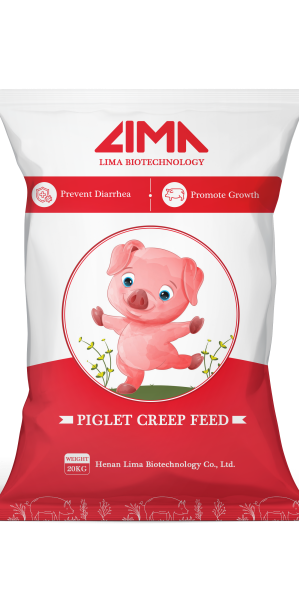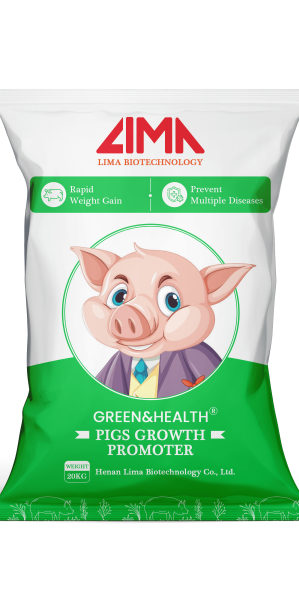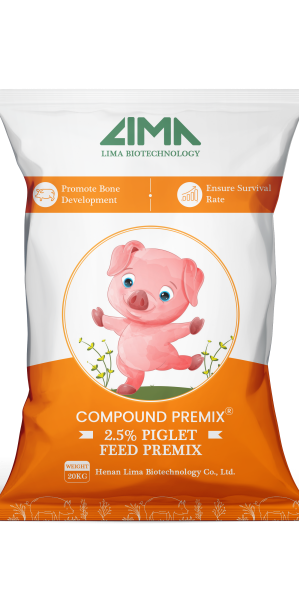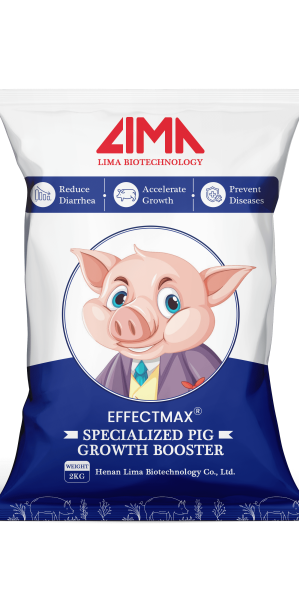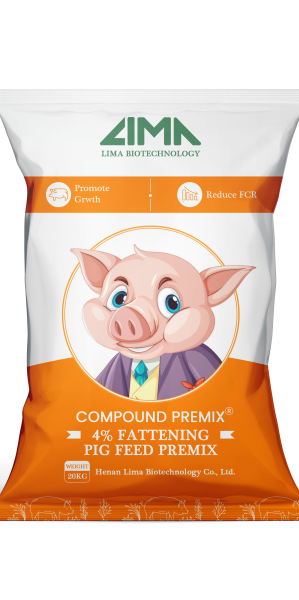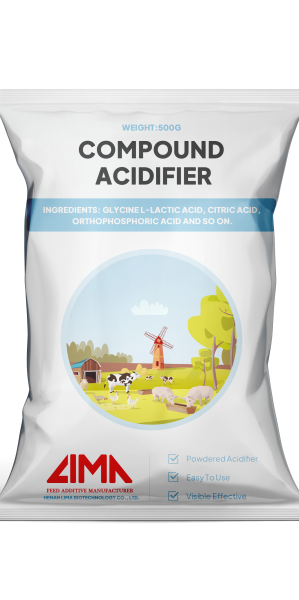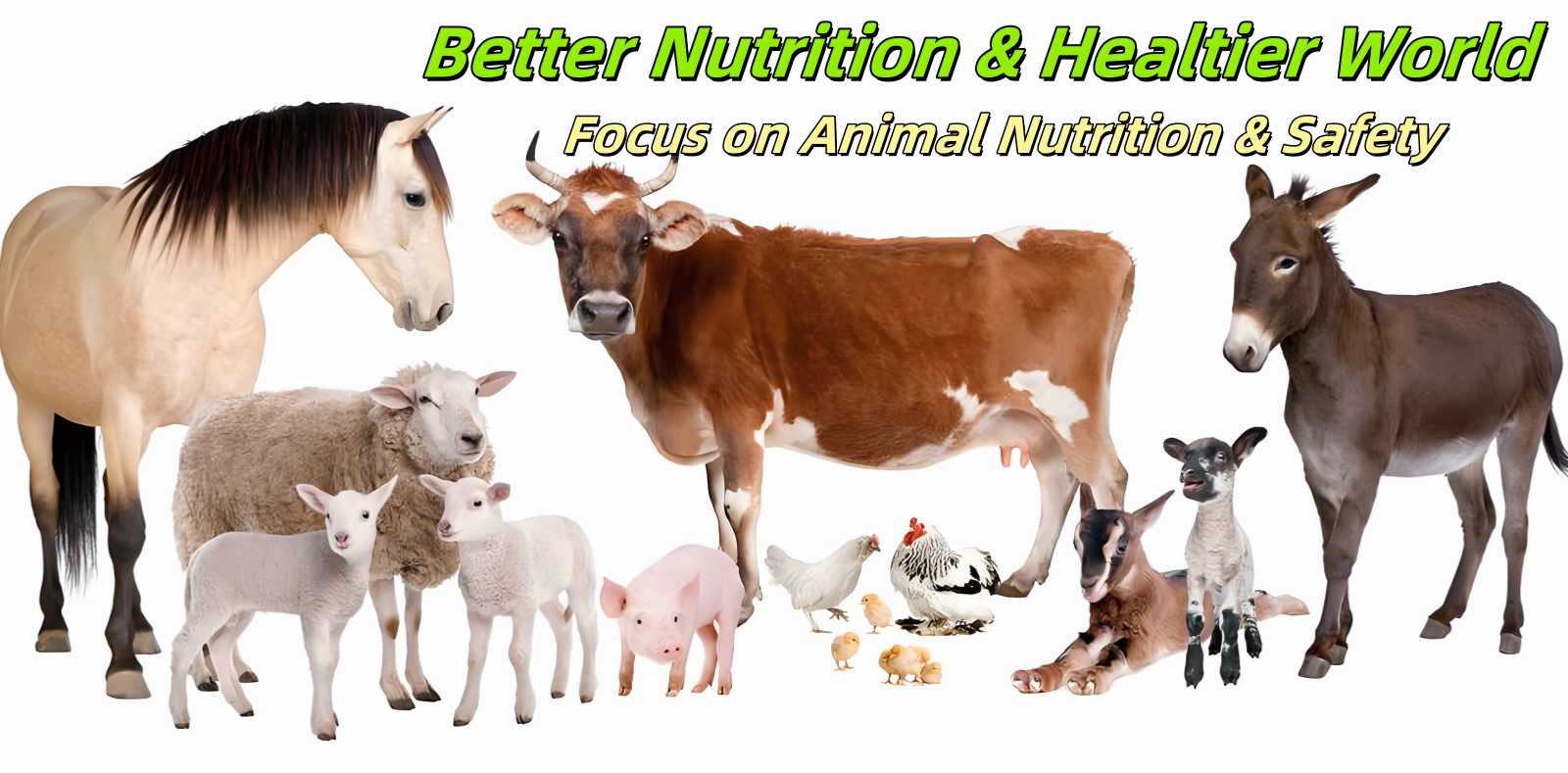In The Gambia, pork is gradually becoming a common ingredient on family dining tables, with market demand rising year by year. For farmers, pig farming is an important avenue for increasing income.
However, many pig farmers face challenges such as slow growth rates, high feed costs, and inadequate nutrition, which hinder the improvement of farming profitability. In reality, mastering modern feeding techniques and appropriately using safe growth promoters for pigs can accelerate growth rates and increase size, effortlessly boosting farming profits.
What Factors Determine Pig Growth Rates
To achieve faster growth, one must first understand the core factors influencing pig development to address issues effectively.
Pig Breed
Different breeds exhibit vastly different growth rates. For instance, while local traditional breeds demonstrate strong adaptability, they have longer growth cycles. In contrast, selectively bred fast-growing breeds (such as improved white pigs and three-way crossbred pigs) inherently possess the advantages of “rapid growth and early market readiness.” It is recommended that pig farmers prioritize selecting these fast-growing breeds suited to Gambia's climate, laying a solid foundation for “rapid growth” from the outset.
Nutrition
Pig growth relies on balanced nutrition: carbohydrates (energy sources like corn and cassava), protein (essential for muscle growth, e.g., soybean meal and fish meal), fats (aiding energy absorption), plus vitamins and minerals (maintaining health). Imbalanced feed—such as relying solely on food scraps—prevents pigs from gaining weight effectively, even with high intake.
Environment
Gambia's hot climate means poorly ventilated or unshaded pens can cause pigs to lose appetite from overheating. Poor hygiene and accumulated manure foster disease-causing bacteria. Additionally, overcrowded pens induce stress, disrupting eating and sleeping patterns, which naturally slows growth.
Health
When pigs fall ill—whether from parasitic infections or respiratory diseases—they not only cease growing but may die in severe cases. Therefore, regular deworming, vaccinations, and disease prevention are essential for sustained growth.
Pig Growth Promoters
Proper use of pig growth promoters can enhance feed digestion, nutrient absorption, and immunity, maximizing the pigs' natural growth potential. However, it is crucial to use safe, compliant products and avoid indiscriminate addition.
What Are Pig Growth Boosters?
Many pig farmers have heard of “growth promoters” but are unsure how to select or use them, sometimes even worrying about safety. In fact, understanding these key points allows for confident use.
As a core element for enhancing pig growth efficiency, these agents achieve scientific weight gain through dual mechanisms: regulating intestinal microflora and optimizing nutrient metabolism. Probiotic products (such as Bacillus subtilis and Lactobacillus acidophilus composite formulations) effectively suppress harmful intestinal bacteria while promoting beneficial bacterial colonization, thereby improving feed conversion rates.
Vitamin premixes precisely formulate VA, VD₃, VE, and B-complex vitamins to meet nutritional demands during critical growth phases, bolstering immunity while accelerating skeletal development and muscle synthesis. Additionally, amino acid chelates can be added according to farm scale and cost requirements to enhance protein absorption efficiency, supporting consistent daily weight gains of 0.8-1.2 kg.
Natural vs Synthetic
- Natural enhancers: Examples include garlic (antibacterial, digestive aid), moringa (vitamin-rich), ginger (stress-relief), and probiotics (gut flora balance). These can be grown locally or purchased at agricultural supply stores, offering safe and affordable solutions.
- Synthetic enhancers: Certain chemical additives may act faster but must comply with Gambian and West African regulations and be used under veterinary supervision to prevent residues or poisoning.
Pig Growth Boosters Suitable for Gambia
Lima, as a novel feed additive, offers multidimensional benefits for livestock farming. It effectively promotes weight gain in livestock while regulating reproductive functions, shortening farrowing duration, advancing estrus cycles, and increasing egg production.
For health maintenance, it controls diarrhea, improves gut health, and enhances overall animal constitution and immunity. Additionally, it reduces feed wastage and minimizes ammonia and odor in farming environments, providing comprehensive support for enhanced farming efficiency.
Key Components
- Probiotics: A blend of active bacterial strains including Bacillus subtilis and lactic acid bacteria. By balancing beneficial and harmful bacteria in the gut, it optimizes the intestinal microenvironment. This not only enhances digestive enzyme activity and feed conversion rates but also reduces the incidence of intestinal diseases, laying a healthy foundation for rapid growth.
- Amino Acids: Rich in essential amino acids including lysine, methionine, and threonine. Lysine—the most commonly deficient limiting amino acid during pig growth—significantly boosts protein synthesis efficiency when adequately supplemented. Methionine promotes fat metabolism, reduces fat deposition, and enhances muscle growth efficiency.
- Vitamins / Minerals: Contains multiple vitamins including A, D, E, and B-complex, along with minerals such as calcium, phosphorus, iron, and zinc. Vitamin A supports epithelial tissue health and vision; balanced calcium-phosphorus ratios ensure proper skeletal development; trace elements like iron and zinc participate in enzyme synthesis and metabolism, compensating for potential nutritional deficiencies in feed to comprehensively support growth.
Core Advantages
Lima's functional benefits are particularly prominent in swine farming scenarios:
- Optimizes the digestive tract microenvironment: Through scientifically formulated probiotics, prebiotics, and functional oligosaccharides, it establishes dominant gut flora in pigs, suppresses harmful bacteria like E. coli and Salmonella, and significantly improves body conformation. Simultaneously, natural plant extracts enhance digestive enzyme activity, increasing feed intake by 15%-20% and establishing a robust foundation for nutrient absorption and rapid growth.
- Strengthening Piglet Immunity: Immunoglobulins, lactoferrin, and complex vitamins in piglet feed build an immune barrier, reducing disease incidence in newborns by over 30%. A specialized formula stimulates mammary cell proliferation in sows, boosting milk secretion and elevating immunoglobulin levels in colostrum. This provides comprehensive, high-quality nutrition for early growth and development, supporting healthy piglet development.
- Prevent and treat common sow diseases: Combining traditional Chinese herbal formulations with bioactive peptides regulates sows' reproductive endocrine function, preventing and treating conditions like mastitis and endometritis. This approach advances sow estrus by 5-7 days, increases litter size by 1-2 piglets per farrowing, extends productive lifespan by 1-2 years, and reduces farming costs.
- Piglet Growth Booster: From the initial feeding stage, a phased precision nutrition formula is implemented, paired with high-quality starter and transition feeds to meet nutritional demands at each growth stage. By the end of the nursery period, piglets achieve weight gains exceeding 1.5 kg, with robust skeletal development and strong constitution, laying a solid foundation for rapid growth in the subsequent finishing phase.
- Finishing Pig Profitability Improvement: Throughout the finishing phase, high-energy, low-fiber feed formulations are employed alongside scientific feeding protocols and environmental control measures. Implementing this program reduces the finishing cycle by approximately 15 days while adding 10-15kg to total weight gain. Concurrently, pork quality improves with a 3%-5% increase in lean meat ratio, significantly boosting overall farming profitability and generating higher economic value for producers.
Natural Growth Promoters
Protein Supplements
- Soybean Meal, Fish Meal: As premium protein sources readily available in the local Gambian market, their high protein content aligns with the nutritional demands of fattening pigs. This significantly boosts lean meat deposition efficiency and accelerates weight gain.
- Peanut Cake: Leveraging Gambia's abundant peanut resources, peanut cake serves not only as an efficient protein supplement but also offers significant cost advantages. It ensures nutritional adequacy while effectively reducing feed costs.
Natural Herbal Promoters
- Garlic: Finely chopped and evenly mixed into feed, it provides natural antibacterial effects while enhancing gastrointestinal motility and digestion, effectively reducing diarrhea incidence.
- Moringa: Widely cultivated across The Gambia, its dried leaves ground into powder are rich in vitamins and essential amino acids. Long-term supplementation systematically boosts herd immunity and reduces disease occurrence.
- Ginger: Feeding shredded ginger helps pigs effectively resist stress responses during temperature fluctuations, maintaining overall health and ensuring stable growth.
Feeding Techniques
Master 3 scientific farming techniques to achieve healthy and rapid fattening of Gambian pigs:
- Precise Stage-Specific Feeding to Match Growth Needs
- Lactation to Weaning Stage (0-2 months): Prioritize natural milk feeding for optimal nutrition. During weaning transition, soften cornmeal porridge with water, mix in small amounts of milk powder, and add probiotics. This reduces intestinal stress while gradually acclimating piglets to solid feed, effectively preventing diarrhea.
- Skeletal Development Phase (2-4 months): Use a formula primarily composed of corn and soybean meal, supplemented with vitamin premix. Maintain feed protein content at 18%-20% to provide ample nutritional support for building a robust skeletal structure.
- Rapid Fattening Stage (4 months to market): Core feed combines corn with peanut cake and fish meal to ensure dual sufficiency of energy and protein, accelerating fat and muscle deposition.
- Utilize Local Resources: Leverage Gambia's abundant agricultural byproducts through scientific processing to create highly cost-effective pig feed:
1. Cassava Peel: Sun-dried, ground, and mixed proportionally into corn feed to effectively supplement carbohydrates and boost feed energy content.
2. Corn Bran: Rich in dietary fiber, directly blended into feed to regulate gut health and enhance digestion and absorption.
3. Peanut Cake: A high-quality plant protein source, used in appropriate ratios to meet pigs' protein requirements.
Safety Note: All feed ingredients must be fresh. Strictly avoid using moldy materials to prevent poisoning from harmful substances like aflatoxins.
- Optimize feeding management to create a comfortable farming environment
- Water Management: Replace clean drinking water at least twice daily. Add cool water in summer to help lower body temperature, maintaining water intake and appetite.
- Feed Storage: Store feed in elevated feeders to ensure ventilation and dryness. Follow the “feed small amounts frequently” principle, promptly removing leftover feed to prevent spoilage and contamination.
- Scheduled Feeding: Establish a regular feeding routine, ideally at 7:00 AM, 2:00 PM, and 6:00 PM daily. This helps pigs develop stable digestive rhythms and improves feed conversion efficiency.
Other Methods to Promote Pig Growth: Environment and Management
Given Gambia's hot climate, housing design and management are critical. Implement these 3 points to minimize stress and illness in pigs:
Housing Design
- Optimize ventilation systems: Strategically place vents on both sides of the housing or use wire mesh for walls to ensure natural airflow. This effectively lowers internal temperatures during summer, preventing stifling conditions that harm pig health.
- Improve Shade Facilities: Roofs can be thatched or constructed with metal sheets featuring insulation layers to reduce heat from direct sunlight at the source. Additionally, install movable shade panels inside the housing to provide pigs with accessible shaded areas to escape intense sunlight.
- Select appropriate flooring materials: Concrete floors facilitate efficient manure removal, significantly improving daily cleaning efficiency. While sandy soil offers excellent breathability and provides pigs with a comfortable resting environment, it requires a regular replacement system to maintain dryness and prevent bacterial growth.
Stress Management
- Scientific Feed Transition: When switching feed, use a gradual blending method. On the first day, mix one-third of the new feed with the original feed. Gradually increase the proportion of new feed daily over a 3-5 day transition period to allow the pigs' digestive systems to fully adapt to the new feed composition.
- Minimize External Disturbances: During critical fattening periods, avoid unnecessary human interference. Eliminate frequent chasing of pigs and loud noises. Severe stress responses can reduce appetite, cause weight loss, and significantly impair growth rates.
- Control stocking density: Provide at least 1.5 square meters of space per finishing pig and 0.5 square meters per piglet. Ensure ample room for movement and rest to prevent aggressive behaviors like fighting or food competition caused by overcrowding.
Disease Prevention and Control
- Regular Deworming Management: Implement a monthly deworming regimen using only highly effective veterinary-recommended deworming medications. Administer these precisely via feed mixing to effectively prevent parasites from depleting nutrients and ensure healthy herd growth.
- Standardized Vaccination: Adhere strictly to the veterinarian's immunization schedule after birth, promptly administering critical vaccines such as swine fever and foot-and-mouth disease to ensure comprehensive immune protection for every piglet.
- Enhanced Sanitation Management: Implement a “daily cleaning, weekly disinfection” protocol. Remove manure from pens at scheduled times daily and conduct thorough weekly disinfection using lime water to minimize pathogen proliferation and transmission, creating a safe and hygienic growth environment for the herd.
Common Mistakes to Avoid in Pig Farming
Many pig farmers invest significant effort yet see slow growth in their pigs, often due to these pitfalls:
Poor Housing Conditions
Long-term accumulation of manure without timely removal leads to excessive ammonia levels in pens, easily triggering respiratory diseases in pigs. Overcrowding causes frequent feeding fights, resulting in weaker individuals receiving insufficient nutrition and experiencing severely stunted growth.
Nutritionally Imbalanced Feeding
Relying solely on leftover food fails to meet pigs' essential nutritional needs for protein, vitamins, and other key nutrients. Long-term reliance on such diets not only causes malnutrition and stunted growth but also triggers intestinal diseases from spoiled food.
Lack of Disease Prevention Awareness
Holding the mistaken belief that “prevention is unnecessary unless disease occurs,” farmers neglect regular deworming and vaccinations. Disease outbreaks result in high treatment costs, and the recovery period for sick pigs causes 1-2 weeks of growth stagnation, severely impacting profitability.
Illegal Use of Growth Promoters
Employing growth-promoting products from unverified sources or arbitrarily increasing dosage (e.g., raising the standard 2% additive rate to 5%) can easily cause adverse reactions like poisoning and diarrhea, ultimately inhibiting normal growth.
With years of industry expertise, Lima Feed Technology's team drives innovation to deliver premium feed additive and premix solutions for global clients. Through our extensive sales and distribution network, our technology reaches over 100 countries worldwide, continuously injecting professional expertise into the breeding industry and advancing industrial upgrades.
Expert Recommendations for Pig Farming
Combining growth promoters with scientific management ensures pigs grow both rapidly and healthily.
Scientific Feeding Plan for Finishing Pigs
To guarantee balanced nutrition and efficient growth in finishing pigs, implement a precise, stage-specific feeding schedule:
- Early Growth Stage (20-40kg): Utilize customized feed formulations to precisely regulate protein, energy, vitamin, and mineral ratios. Pair with scientifically determined feeding frequencies and portion sizes. Integrate smart feeding equipment for real-time intake monitoring to ensure optimal nutrient delivery.
- Mid-Growth Stage (40-60kg): Optimize feed formulations by dynamically adjusting nutrient ratios while strictly controlling feeding schedules. Real-time tracking of individual pig intake data via smart feeding systems guarantees precise nutrient intake, supporting sustained growth.
- Late Finishing Stage (60kg to Market Weight): Develops bespoke diets tailored to the final growth surge, emphasizing enhanced ratios of key nutrients like energy and protein. Maintain scientifically determined feeding frequencies and utilize smart devices for real-time intake monitoring to maximize growth efficiency, ensuring pigs meet ideal market standards.
Growth Status Monitoring and Management
Without specialized weighing equipment, effectively track growth progress using the “Dual-Dimensional Estimation Method”:
- Body Condition Observation: On the 1st of each month during the early morning fasting period, assess pig body conformation. A noticeably broadened back and rounded, full abdomen indicate healthy growth.
- Palpation Assessment: Feel the muscles along the pig's back and legs to gauge meat development. For precise data, use a veterinary mini-scale to record individual weights. If monthly weight gain falls below 5kg, promptly optimize feed formulation or adjust growth promoter dosage.
Conclusion
To accelerate Gambian pig growth booster, follow this four-step approach: Select fast-growing breeds; use safe growth promoters like probiotics and herbal extracts; supplement balanced feed with cassava peel and peanut cake; ensure proper barn ventilation and disease prevention.
This multi-pronged strategy enables earlier market readiness, increased weight gain, and higher profits. For slow-growing pigs, first optimize feed and clean barns, then add growth promoters compliant with regulations for immediate results.
- About Lima Biotech
- Careers-Lima Biotech
- Code of Conduct-Lima Biotech
- Conditions of Sale-Lima Biotech
- Contact-Lima Biotech
- Cookies Policy-Lima Biotech
- Find Agent-Lima Biotech
- Global Warehouses
- Investor Relations-Lima Biotech
- Legal Information-Lima Biotech
- Privacy Policy-Lima Biotech
- Success-Lima Biotech
- Sustainability-Lima Biotech
- World Class Manufacturing-Lima Biotech

















